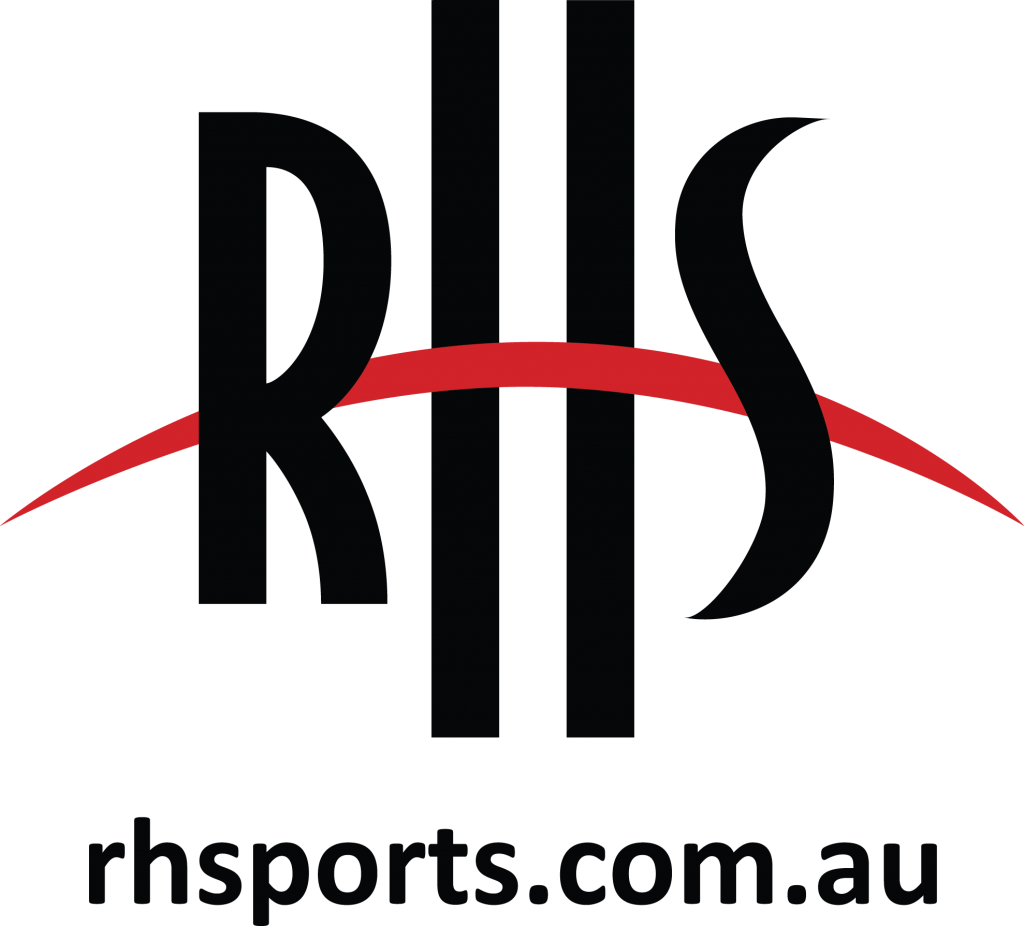HMS blog: Year 11 scope and sequence

February 2024
2024 is the year to plan for HMS. In this blog, we share ideas and resources on Year 11 HMS scope and sequence.
To start you thinking….
One of the features of the new Stage HMS syllabus is the level of flexibility afforded teachers to tailor the delivery of the course to their context. We asked some experienced teachers how they are thinking about setting up their Year 11 scope and sequence.
This video highlights there are a range of options for how you might sequence and deliver the content in Year 11.
DOWNLOAD: ACHPER NSW has prepared a number of sample scope and sequence you can download for free.
Here we unpack and discuss some of the options further:
Option 1: Follow the syllabus order
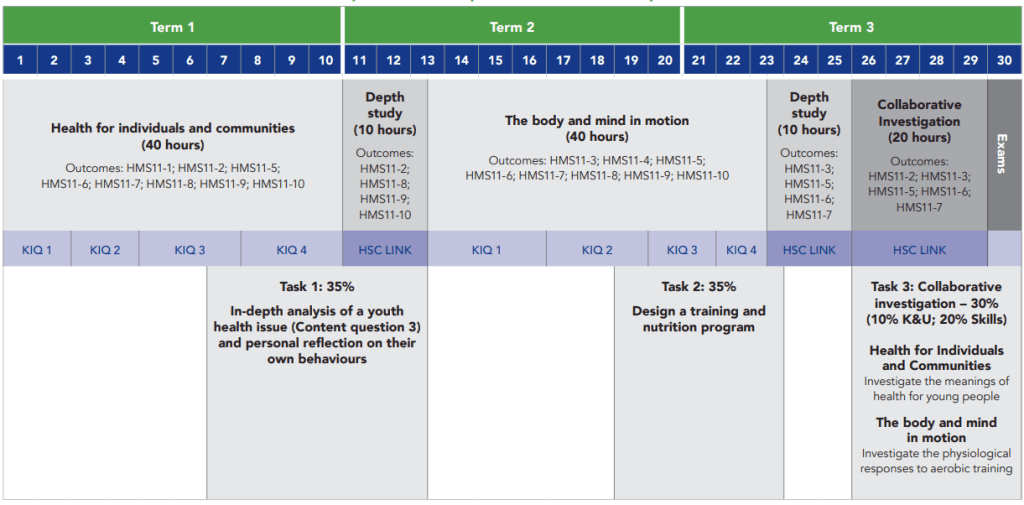
The simplest option is to work through the syllabus content from front to back – dot point by dot point. You would start with Health of Individuals and Communities and complete a depth study as the first assessment task.
This would be followed by the Body and Mind in Motion content, with a depth study after the focus area. The collaborative investigation would be completed once all of the Year 11 content had been taught, giving students a choice of which focus area to target.
Consider:
- In this option an end-of-year exam has not been included as one of the three formal assessment tasks. If your school requires this, you could drop one of the depth studies and replace with the exam.
Option 2: Embed depth studies within the focus areas
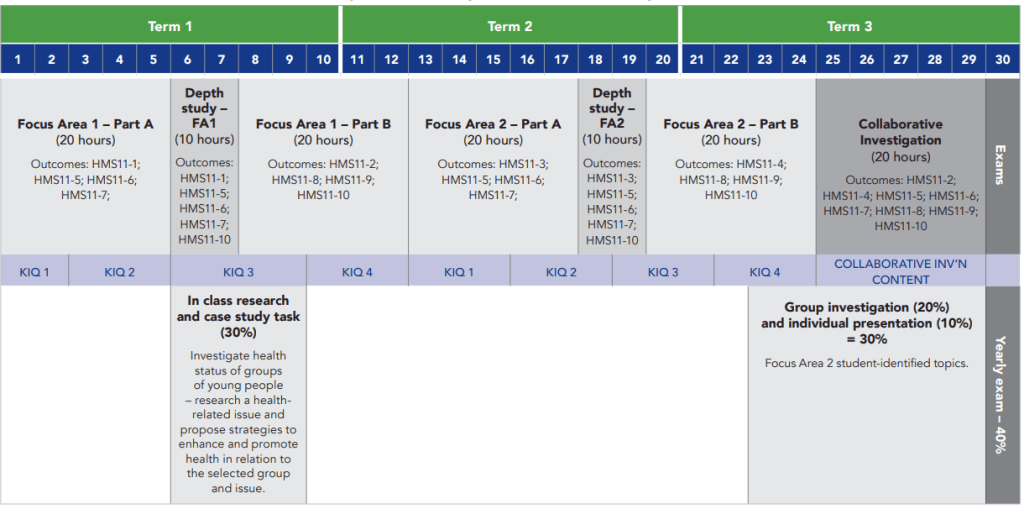
This option schedules the Health for Individuals and Communities depth study as a formal assessment task in the middle of the learning sequence. The same schedule is repeated for Body and Mind in Motion, except the depth study is not included as one of the three formal assessment tasks. The yearly exam is formally assessed.
Consider:
- This option highlights one of the disadvantages of formally assessing the yearly exam. It creates issues with balancing assessment of outcomes from both focus areas across the other two tasks. As a solution, we prescribed the collaborative investigation to draw on topics only from Body and Mind in Motion to assess the knowledge and understanding outcomes for this focus area.
Option 3: Flip the syllabus
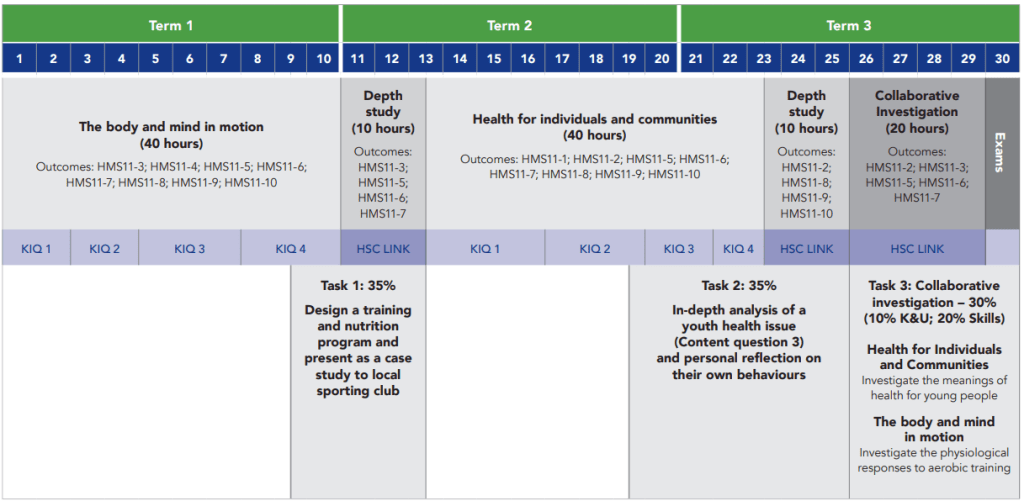
This is the option that many teachers have decided to go with after attending our Leading Year 11 HMS Faculty Planning workshops. Teachers cite the higher interest for practical and movement-based activities as a great introduction to the new course. They also feel it beneficial to teach Health for Individuals and Communities in the lead-up to the exam to help students remember content.
Consider:
- This scope and sequence has a heavy assessment burden at the end of Term 3. Schools that are required to spread their assessment tasks across the three terms may need to revisit the timing of tasks.
Option 4: Create greater student choice
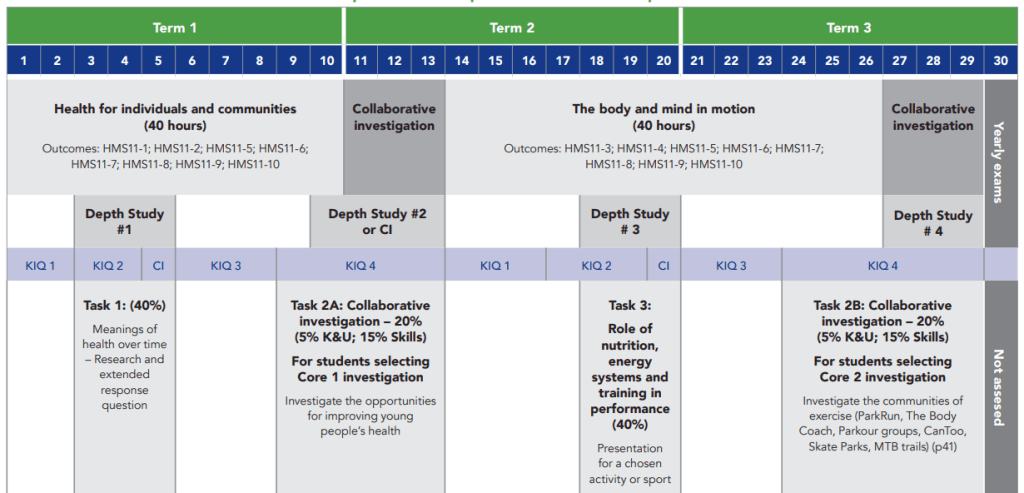
This option creates flexibility and increases the level of student choice when it comes to depth studies and collaborative investigation topics. Learning around the research elements of the collaborative investigation would be completed throughout Year 11. Building the investigation tasks into the teaching and learning of each focus area will help ease the assessment pressure at the end of the Year 11 course.
Linking the depth studies with the teaching and learning associated with the collaborative investigation ensures students can choose their area of interest and align their collaborative investigation.
Students who complete their collaborative investigation in focus area 2 will complete a non-assessable depth study during weeks 11 and 12.
Students who complete their collaborative investigation in focus area 1 will complete a non-assessable depth study during weeks 27 and 28.
Consider
- The advantage of this sequencing is you can identify links to Year 12 content and focus depth studies in these areas to better prepare students for Year 12.
- You will need to be well-planned and prepared to deliver this scope and sequence. Much of the learning will be teacher-facilitated and student-driven, requiring a high level of student independence to succeed.
- For the collaborative investigation tasks, schools may need to set a single date when both focus area tasks are submitted and their findings presented to an audience for assessment. This could take place during the exam period in place of sitting a formal exam.
Learn more about HMS
ACHPER NSW offers professional learning workshops to help you prepare for HMS syllabus implementation.
Leading Year 11 HMS Faculty Planning
A one-day workshop for those leading planning. Unpack the syllabus and start creating scope and sequence, unit frameworks and assessment schedules with our templates and resources. View all events
Designing Year 11 HMS unit plans workshop
A practical one-day workshop unpacking the Year 11 HMS course. Explore sample scope and sequence and start creating Year 11 units of work with our new programming resources. View all events
Assessing Year 11 HMS workshop
Start designing your school assessment schedule at this new one-day workshop. Identify opportunities for formative assessment and design a Collaborative Investigation that is efficient for teachers and sets students up for HSC success. View all events

